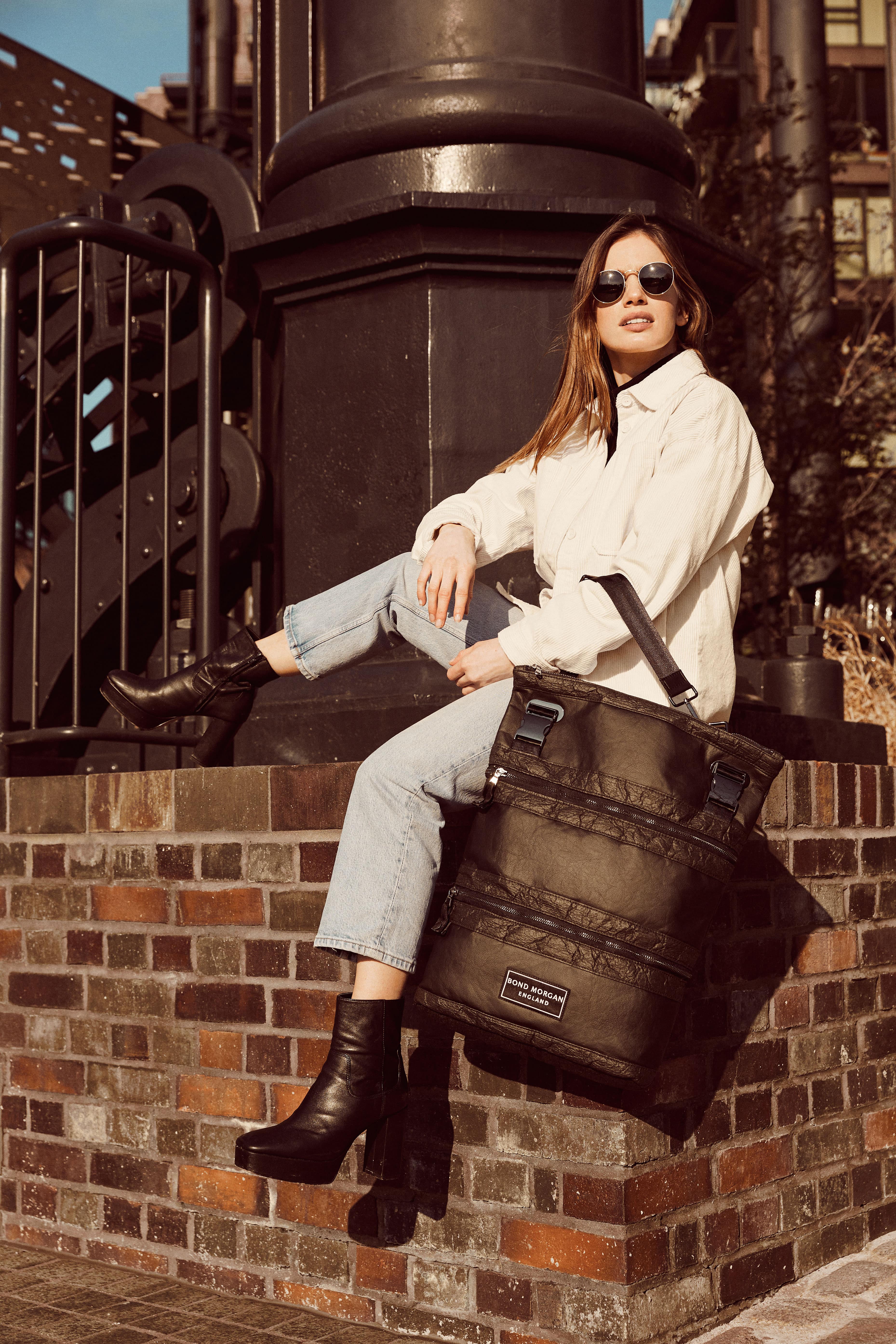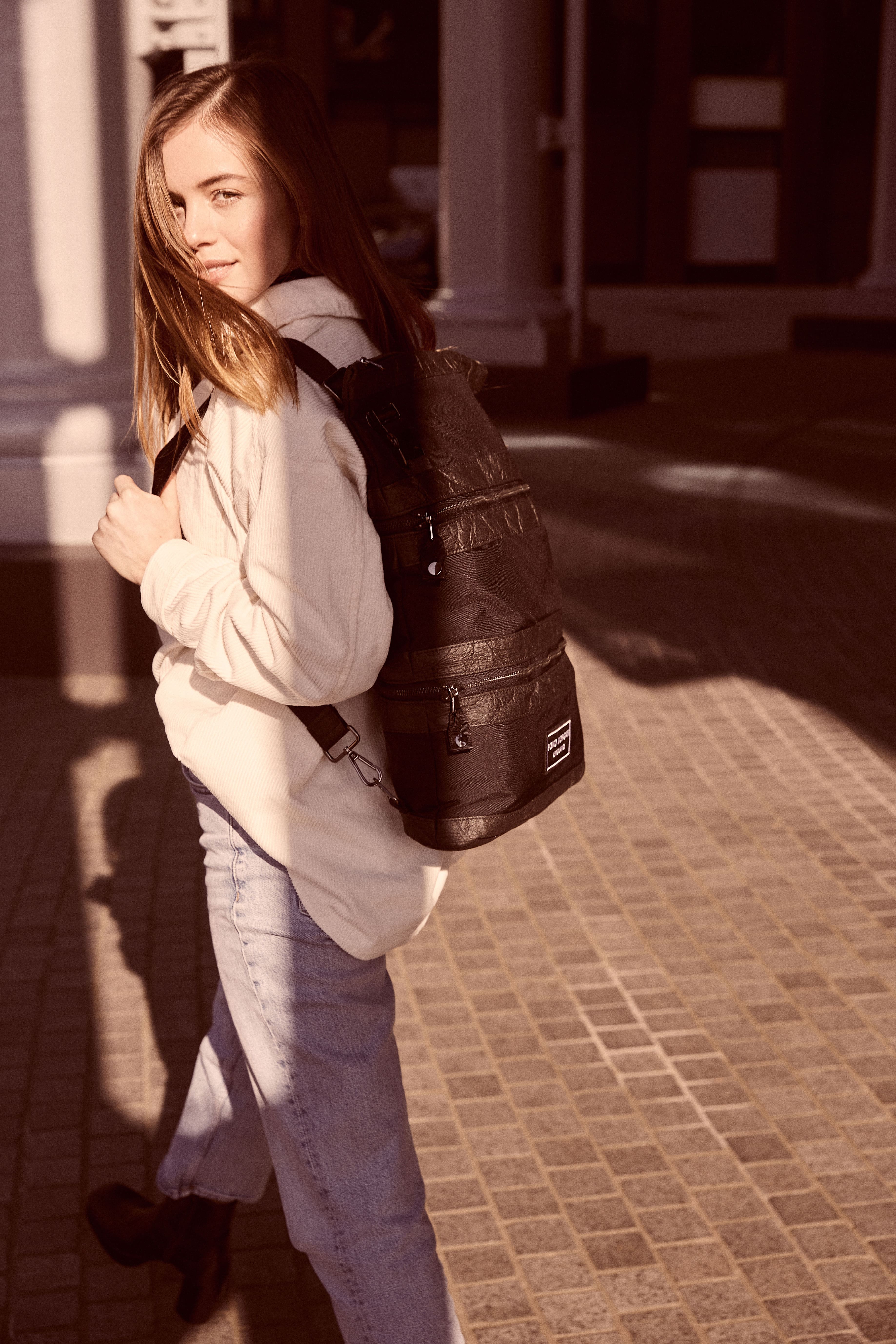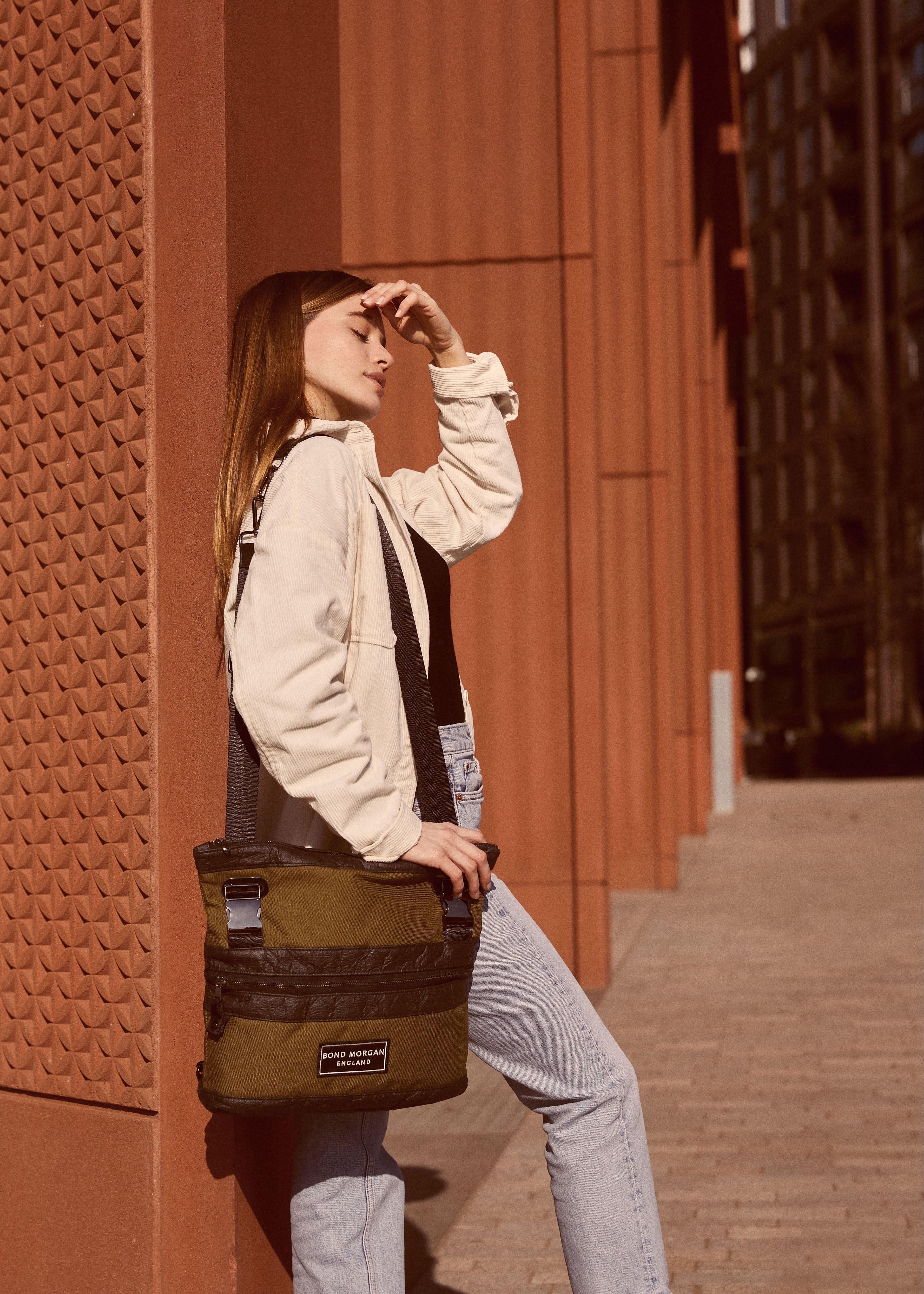I believe design is absolutely critical to sustainability. If we don’t design things that people love, they will be discarded, further exacerbating our waste problem globally. However, if we create beautiful items that move and inspire us, they will be treasured and preserved forever. We need to repair, reuse, recycle all we consume instead of increasing overconsumption - this is key for a circular economy.
Modular design has been the focal point of my designs, showcasing that the fashion industry can do more to create less waste. If modules of a product can be replaced or added without affecting the quality of the rest of the design, this can counteract the 'consumption' mindset, which creates a constant sense of necessity and ultimately dissatisfaction. An effective modular design can only be achieved if the division between the modules are as simple and not as complex as the design itself.
What is multifunctional design?
The development of a product can be a long, drawn-out process. When I create, I look at the maximom potential of a design. How many uses can we get out of one product? This has been a direct inspiration from my family. I was brought up on the mantra ‘make do and mend’ and sewing and drawing were skills I learned at an early age. Everything can have a use, and if you can’t directly find a use, find someone that can.
I have a love for creating, learning and travelling, after spending a great amount of time adventuring and seeing the beauty of the world. I wondered if our islands, oceans, mountains will ever be the same again. The fashion industry is responsible for more than half of the solid waste that ends up in landfill each year. This is a never-ending conveyer belt of rubbish which eventually ends up in our oceans.
How can we use sustainable materials?
With 9 years left to reach the Global Fashion Agenda and to help combat climate change, the main material I focus on using is ECONYL® regenerated nylon. The yarn is produced by reusing waste, which includes old fishing nets removed from the seas, carpet scraps, fabric waste and industrial plastic. What I really love about this yarn, is that it can be infinitely recycled, remoulded, recreated and perform exactly the same as a virgin nylon. For every 10,000 tons of ECONYL® raw material, 70,000 barrels of crude oil are saved and 57,100 tons of CO2 emissions are saved.
I also like to use an alternative to animal leather and petroleum-based textiles as both of these the industries are very highly polluting. I use a plant-based textile which is a by-product of the agriculture industry. Pinatex® uses no extra land, water or pesticides. The waste also provides the local community with a second income. When the textile has come to the end of its life, it can be shred into geotextiles, which is great for road, railway embankments and earth dikes.
Why is circular, multifunctional & modular design important?
Innovation has the potential to democratize fashion on a huge scale, improve access, promote sustainability, accelerate and redefine the face of the fashion industry. Design can help eliminate much of the environmental damage in the fashion industry, often blamed for a range of environmental problems including air & water pollution and climate change. Shopping for sustainable fashion is just one of so many ways we can all do our bit to combat climate change.
Shop the article
Read more
ENVIRONMENT
What Does Sustainable Design Look Like?
I believe design is absolutely critical to sustainability. If we don’t...
ENVIRONMENT
Does Buying Organic Really Help Combat Climate Change?
Organic farming is the production of crops and livestock without the use of...
ENVIRONMENT
How Often Should You Wash Your Clothes?
Are you over laundering your clothes? The process of washing our clothes is...
ENVIRONMENT
Sustainable Surfing: Finding The Best Waves In The UK
You might think of surfing as a pretty safe bet when it comes to sports that...
ENVIRONMENT
Designing With The Ocean In Mind
As lockdown hit in 2020, and people were bound to their homes, nature...


